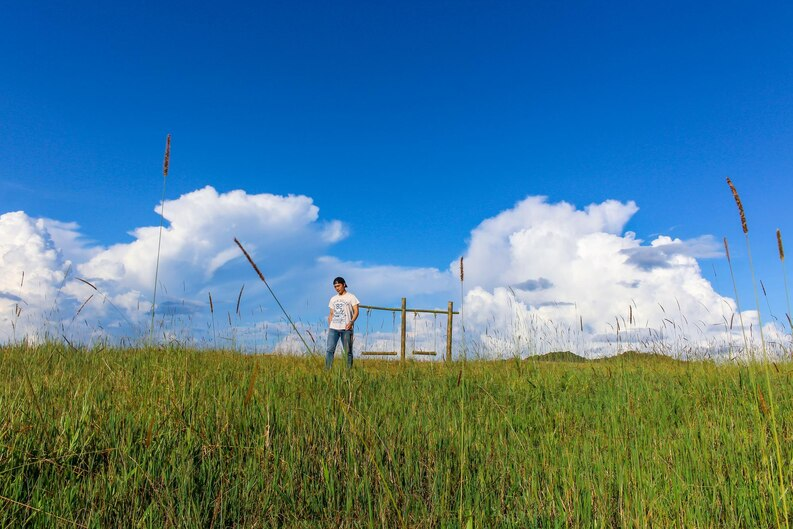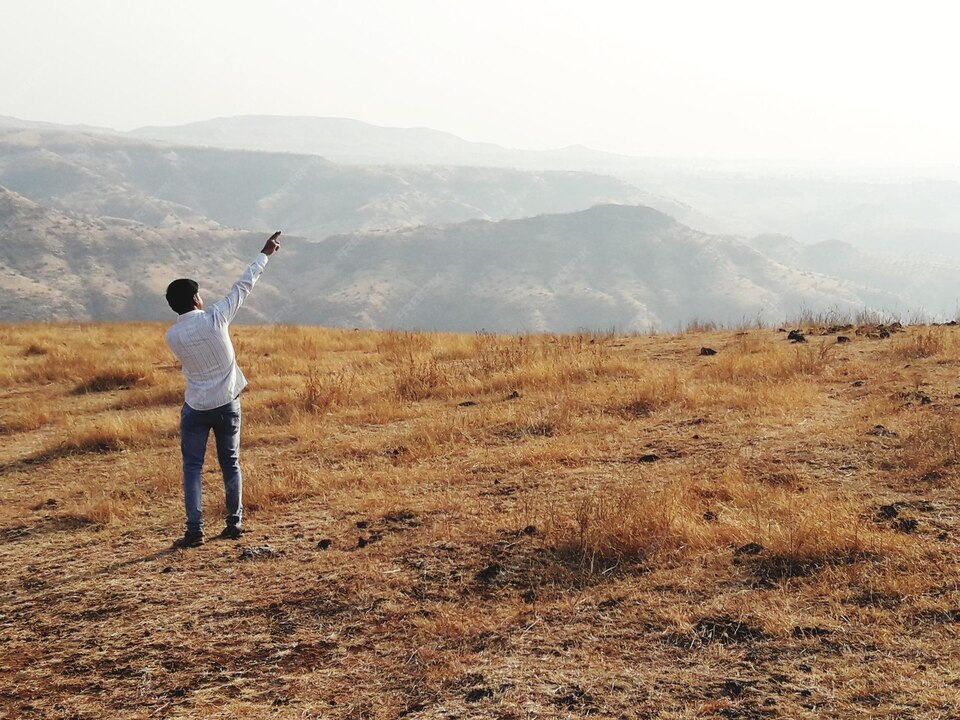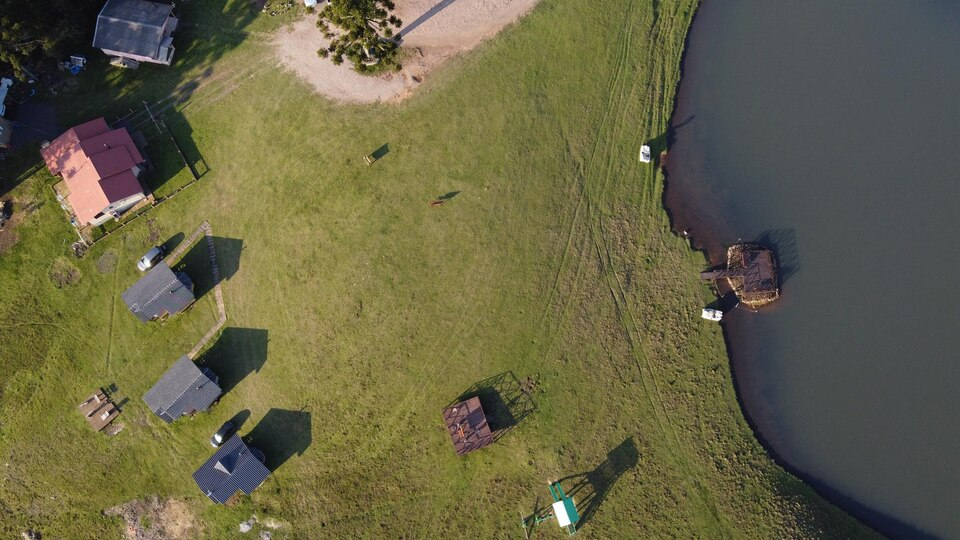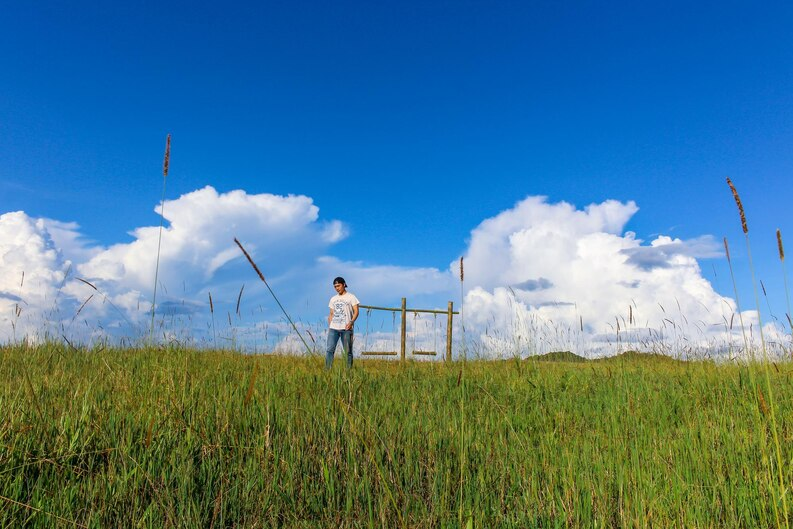
Open land plays a crucial role in our environment, providing space for agriculture, wildlife habitats, and recreational activities. It remains largely undeveloped, allowing ecosystems to thrive while supporting essential functions such as air purification and climate regulation. These open spaces contribute to biodiversity, offer scenic landscapes, and help maintain a balance between nature and human activities.
But what exactly does open land mean, and why is it important? Understanding this concept is essential for policymakers, environmentalists, and landowners as they work to manage land use responsibly. As urbanization expands, preserving open land becomes increasingly important to ensure environmental sustainability and community well-being. This article explores the meaning of open land, its significance, and the benefits it provides.
What is Open Land?

Definition of Open Land
Open land refers to any area that is either undeveloped or minimally developed, meaning it lacks significant buildings, infrastructure, or urbanization. This type of land remains largely in its natural state or is designated for specific uses such as agriculture, conservation, or recreation. Open land plays a crucial role in maintaining environmental balance, supporting biodiversity, and providing spaces for various human activities and wildlife habitats.
Open land is essential for ecological sustainability as it helps in air purification, carbon sequestration, and groundwater recharge. It also serves as a buffer against urban expansion, ensuring that communities have access to green spaces that contribute to their well-being.
Types of Open Land
Open land can be categorized into various types based on its primary use and ecological function. These categories include:
1. Agricultural Land
- Used primarily for farming, crop production, and livestock grazing.
- Provides food and raw materials essential for human survival.
- May include pastures, orchards, and fields for various agricultural purposes.
2. Forests and Woodlands
- Designated for conservation and biodiversity preservation.
- Act as carbon sinks, helping mitigate climate change.
- Provide habitats for numerous plant and animal species.
- Used for sustainable forestry practices and limited recreational activities.
3. Grasslands and Prairies
- Open landscapes dominated by grasses rather than trees.
- Support a variety of ecosystems and are home to diverse wildlife.
- Help prevent soil erosion and contribute to the water cycle.
4. Recreational Lands
- Include parks, nature reserves, hiking trails, and open fields.
- Provide spaces for outdoor activities such as walking, jogging, biking, and picnicking.
- Enhance community well-being and encourage physical fitness.
5. Wetlands and Marshes
- Crucial for maintaining water quality and controlling flooding.
- Serve as habitats for birds, fish, amphibians, and other wildlife.
- Act as natural water filtration systems, removing pollutants from runoff.
Importance of Open Land
Open land is an invaluable resource that contributes to both the environment and human society. Its significance can be highlighted through the following key aspects:
- Environmental Benefits
- Helps regulate climate by absorbing carbon dioxide.
- Preserves ecosystems and provides shelter for wildlife.
- Reduces the impact of natural disasters such as floods and droughts.
- Economic Contributions
- Supports industries such as agriculture, forestry, and tourism.
- Increases property values by enhancing scenic beauty and livability.
- Promotes eco-tourism and recreational activities, boosting local economies.
- Social and Health Benefits
- Provides spaces for physical activity, reducing health risks associated with sedentary lifestyles.
- Encourages social interaction and community engagement.
- Improves mental well-being by offering serene natural surroundings.
Uses of Open Land

Agricultural Purposes
Open land plays a crucial role in agriculture, providing vast spaces for crop cultivation and livestock grazing. These lands are essential for food production, sustaining local and global food supplies. In rural areas, agriculture serves as a primary economic activity, offering employment and supporting local markets. Different types of open land used for agriculture include:
- Croplands: Areas dedicated to growing grains, vegetables, fruits, and other staple foods.
- Pastures and Rangelands: Grasslands and open fields where livestock such as cattle, sheep, and goats graze.
- Orchards and Vineyards: Open spaces used for growing fruits, nuts, and grapes for wine production.
Environmental Conservation
Preserving open land is vital for maintaining ecosystems, protecting biodiversity, and supporting wildlife habitats. Conservation efforts focus on:
- Preventing deforestation: Protecting forests from excessive logging and land conversion.
- Promoting reforestation: Planting trees to restore lost greenery and improve air quality.
- Wildlife conservation: Ensuring habitats remain undisturbed to support endangered species.
- Soil and water conservation: Preventing erosion and maintaining water sources such as wetlands and rivers.
Urban Planning and Development
In urban areas, planners designate open land for parks, green spaces, and community areas. These spaces contribute to:
- Improved air quality: Vegetation filters pollutants and enhances oxygen levels.
- Aesthetic and recreational benefits: Parks and gardens provide relaxation spots for residents.
- Flood control: Open lands with natural drainage help manage stormwater and reduce flood risks.
- Sustainable urban growth: Balancing development with environmental preservation.
Recreational Activities
Open land serves as a hub for various recreational activities, promoting outdoor engagement and wellness. Common uses include:
- Hiking and Camping: Nature trails and campgrounds offer adventure and relaxation.
- Birdwatching and Wildlife Observation: Preserving ecosystems attracts nature enthusiasts and researchers.
- Sports and Fitness Activities: Open fields are used for jogging, cycling, soccer, and other sports.
- Picnics and Family Gatherings: Parks and reserves provide safe and scenic places for social interaction.
Climate Regulation
Open land plays a significant role in mitigating climate change and maintaining environmental balance by:
- Carbon sequestration: Trees and vegetation absorb carbon dioxide, reducing greenhouse gases.
- Temperature regulation: Green spaces lower urban temperatures, reducing the heat island effect.
- Air purification: Vegetation filters out pollutants, leading to cleaner air.
- Water cycle maintenance: Wetlands and forests contribute to rainfall patterns and groundwater recharge.
Benefits of Open Land

Environmental Benefits
- Carbon Sequestration: Trees and plants absorb CO₂, helping combat climate change.
- Air and Water Purification: Wetlands and forests filter pollutants, ensuring clean air and water.
- Habitat Preservation: Open land supports diverse wildlife and prevents species extinction.
- Soil Conservation: Reduces erosion and maintains soil fertility for sustainable land use.
Economic Benefits
- Agricultural Productivity: Farmlands contribute to food security and rural economies.
- Tourism and Recreation: National parks, hiking trails, and natural reserves attract visitors, boosting local economies.
- Real Estate Value: Properties near green spaces tend to have higher market value due to scenic beauty and better air quality.
- Job Creation: Conservation efforts, tourism, and agriculture provide employment opportunities.
Social Benefits
- Mental and Physical Health: Access to open spaces reduces stress and promotes physical activity.
- Community Bonding: Parks and recreational areas encourage social interaction and community events.
- Aesthetic Value: Green landscapes enhance the beauty of cities and rural areas, making them more attractive and livable.
- Educational Opportunities: Open lands serve as outdoor classrooms for learning about ecology, conservation, and sustainability.
By maintaining and utilizing open land wisely, societies can ensure ecological balance, economic growth, and social well-being for future generations.
Challenges and Threats to Open Land
Despite its numerous benefits, open land faces various challenges and threats that jeopardize its sustainability and availability. These challenges stem from human activities, environmental changes, and inadequate conservation efforts. Below are some of the major threats to open land:
Urbanization
- Rapid population growth and expanding cities lead to the conversion of open land into residential, commercial, and industrial spaces.
- Urban sprawl reduces natural landscapes, leading to habitat loss and ecological imbalance.
- Infrastructure development, such as roads and highways, fragments open land and disrupts wildlife corridors.
Deforestation
- Large-scale logging for timber, agriculture, and urban expansion results in the destruction of forests and woodlands.
- Deforestation contributes to climate change by reducing carbon sequestration capacity.
- Loss of tree cover accelerates soil erosion and decreases water retention, affecting local and global ecosystems.
Pollution
- Industrial activities, improper waste disposal, and plastic pollution degrade the quality of open land.
- Contaminants from pesticides and chemicals used in agriculture can seep into the soil and water sources.
- Air and noise pollution from urban expansion disrupt local wildlife and plant life.
Climate Change
- Rising global temperatures affect the health and sustainability of forests, wetlands, and grasslands.
- Increased frequency of wildfires, droughts, and floods threatens ecosystems that depend on stable climate conditions.
- Melting polar ice caps and shifting weather patterns impact the balance of open land ecosystems.
Legal and Policy Framework for Open Land Management

Effective open land management requires legal regulations and policies to prevent overexploitation and degradation. Governments and organizations worldwide implement laws to ensure land conservation, responsible usage, and sustainable development. Key aspects of legal and policy frameworks include:
- Zoning Regulations: Designating land for specific uses, such as agricultural, residential, or conservation areas, to prevent haphazard urban expansion.
- Protected Land Designations: Establishing national parks, wildlife reserves, and conservation easements to safeguard natural habitats and biodiversity.
- Sustainable Land-Use Policies: Encouraging eco-friendly farming, forestry, and urban development practices to minimize environmental impact.
- Incentive Programs: Providing financial benefits, tax breaks, or grants for landowners who maintain their land for conservation or sustainable agriculture.
- International Agreements: Many countries participate in global environmental treaties, such as the Convention on Biological Diversity and the Paris Agreement, to protect open land and mitigate climate change effects.
Conservation and Protection Strategies
Efforts to protect and conserve open land require a combination of policy measures, community involvement, and sustainable practices. Some key strategies include:
Government Policies
- Implementation of strict land-use regulations and zoning laws to prevent uncontrolled urban sprawl.
- Establishment of protected areas such as national parks, wildlife reserves, and conservation easements.
- Incentives for sustainable farming and forestry practices to reduce environmental impact.
Sustainable Development
- Promoting eco-friendly infrastructure and smart urban planning to minimize land degradation.
- Encouraging green building practices and the use of renewable energy to reduce ecological footprints.
- Restoration projects to rehabilitate degraded land through afforestation and wetland conservation.
Community Involvement
- Raising awareness and educating communities on the importance of open land conservation.
- Encouraging local participation in tree planting, clean-up drives, and land stewardship programs.
- Supporting indigenous and local conservation efforts that focus on sustainable land management.
Preserving Open Land for a Sustainable Future

Understanding the significance of open land is essential for achieving sustainable development and ensuring environmental conservation. Open land plays a critical role in climate regulation, supports biodiversity, and provides economic and recreational opportunities. It enhances the quality of life by offering green spaces for communities and maintaining ecological balance.
However, open land is increasingly threatened by urbanization, deforestation, pollution, and climate change. As cities expand and industries grow, the pressure on natural landscapes continues to rise, leading to habitat destruction and resource depletion. Without proactive conservation efforts, the loss of open land could have long-term environmental and societal consequences.
To safeguard open land for future generations, it is crucial to implement effective conservation strategies, including responsible land-use policies, community involvement, and sustainable development practices. By striking a balance between economic growth and environmental preservation, societies can ensure that open land remains a valuable resource for years to come.

Get a no-obligation offer in just a few minutes.





.webp)




.webp)
